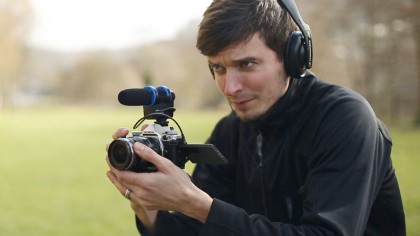Video A-Z
Baffled by video jargon? Our A-Z covers basic know-how right through to pro hardware

You can use regular DSLR and compact system camera lenses for video, but they do have limitations. One of these is the autofocus actuators used. These are usually designed solely for stills photography, producing short, fast focus movements which bring the subject into focus quickly, but not smoothly. If you use them for video the results look 'jumpy', and the camera mic may pick up operational noise.
An increasing number of lenses are designed with video autofocus in mind, though, with quieter, smoother and more progressive focus actions. Examples include Canon's STM (stepper motor) lenses.
Most professional video is shot using manual focus, so this isn't necessarily an issue – but if you want to use more advanced 'pull focus' or 'follow focus' techniques you'll need a 'cinema' lens with gear-like focus rings designed to mesh with focus accessories. Typically, you'll fix start and end points for your pull-focus action.
Finally, you'll see that some lenses have 'T' stops rather than 'f' stops. Regular aperture f-stop settings assume the lens's light transmission is 100% efficient. It's not – and while this doesn't have much impact in stills photography, in video and cinema it's different, and lenses use the actual light transmission 'T' value instead. For example, the cinema version of the Samyang 50mm f/1.4 is actually rated as a 'T1.5'.
Get daily insight, inspiration and deals in your inbox
Sign up for breaking news, reviews, opinion, top tech deals, and more.

Rod is an independent photographer and photography journalist with more than 30 years' experience. He's previously worked as Head of Testing for Future’s photography magazines, including Digital Camera, N-Photo, PhotoPlus, Professional Photography, Photography Week and Practical Photoshop, and as Reviews Editor on Digital Camera World.